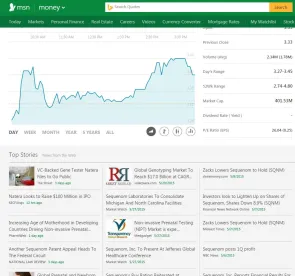On October 21, 2015, CFTC Chair Timothy Massad spoke at the “Evolving Structure of the U.S. Treasury Market” conference organized by the U.S. Department of Treasury and the Federal Reserve Bank of New York. His remarks came the day after SEC Chair Mary Jo White’s comments, which we blogged about here, and follow this summer’s Joint Staff Report analyzing the significant volatility that the U.S. Treasury market experienced on October 15, 2014.
Before discussing specific proposals regarding algorithmic trading the CFTC is considering, the Chair discussed some key aspects of the Treasury futures market that differentiate it from the Treasury cash market discussed by SEC Chair White. Unlike the cash market, all orders in the Treasury futures market are sent to a central order book and all trades are reported on a post-trade basis. As a result, a high degree of automated trading has developed in the Treasury futures market and there is more data collected on the futures market.
With respect to the volatility experienced on October 15, 2014, the Chair explained that this market event was not unique to the Treasury futures market as certain other futures markets have experienced similar price swings since 2010. Thus, the volatility on October 15 should not be viewed as an isolated event and the Chair noted that the events in other markets provide perspective for an analysis of the Treasury futures market.
Given the increase in algorithmic trading and the related risks, the Chair discussed the steps the CFTC has taken to address those risks and the further steps he believes should be taken. The Chair stated that “in the near term, [the CFTC] is focused on looking at operational risks, and taking steps to minimize the potential disruptions and other operational problems that may arise.” In this regard, the CFTC is considering several proposals that likely will address the following:
-
Pre-Trade Controls. The Chair noted that the CFTC will likely require algorithms to have pre-trade risk controls such as message throttles and maximum order size limits. However, the CFTC does not expect to prescribe how to set the limits. The pre-trade controls will apply to all automated trading whether it is high or low frequency and the CFTC will not attempt to define high-frequency trading.
-
Rules For Automated Systems. The Chair stated that the CFTC is looking at proposing requirements regarding the design, testing and supervision of automated trading systems. In addition, the CFTC may propose rules regarding the use of “kill switches,” which can be used to quickly shut down malfunctioning algorithms.
-
Registration. The CFTC is also considering whether to require registration for proprietary trading firms who access the market directly through automated trading systems and are not already registered with the CFTC.
-
Self-Trading. The Chair also noted that the CFTC is considering whether to require measures to limit self-trading and distinguish between unintentional self-trading and illegal wash trading.
-
The CFTC is also examining market maker and trading incentive programs, which have proliferated with the increase in automated trading, and is expected to focus on increased transparency.
The Chair’s speech reminds us that while many regulators are considering additional regulation of algorithmic trading, new rules will need to take into account the specifics of a particular market and there is not a one-size-fits-all solution. The CFTC is expected to issue additional proposals regarding algorithmic trading in November so stay tuned for further updates in this area.




 />i
/>i

